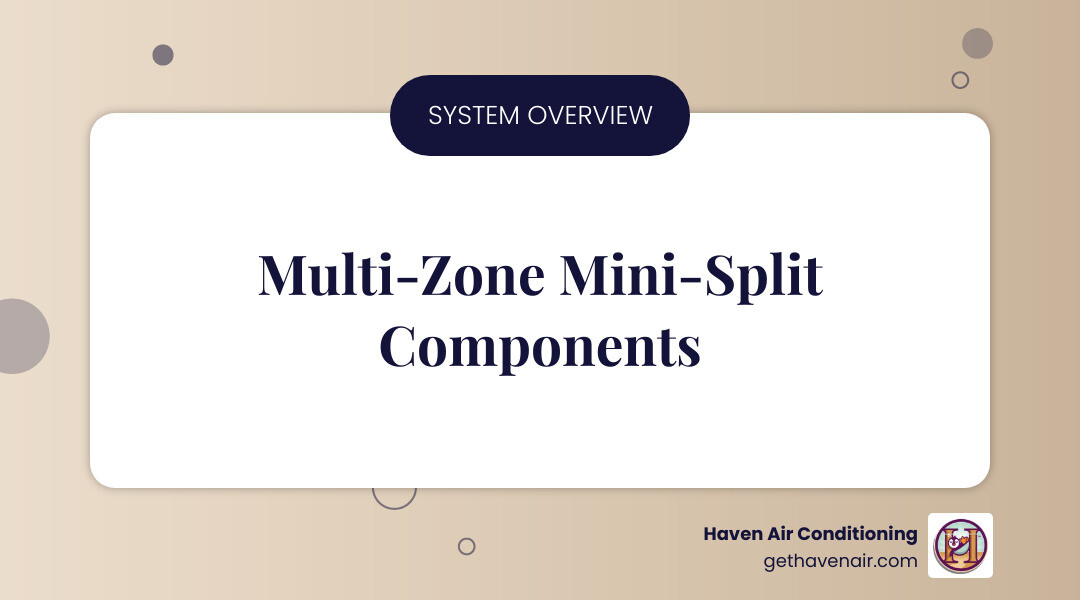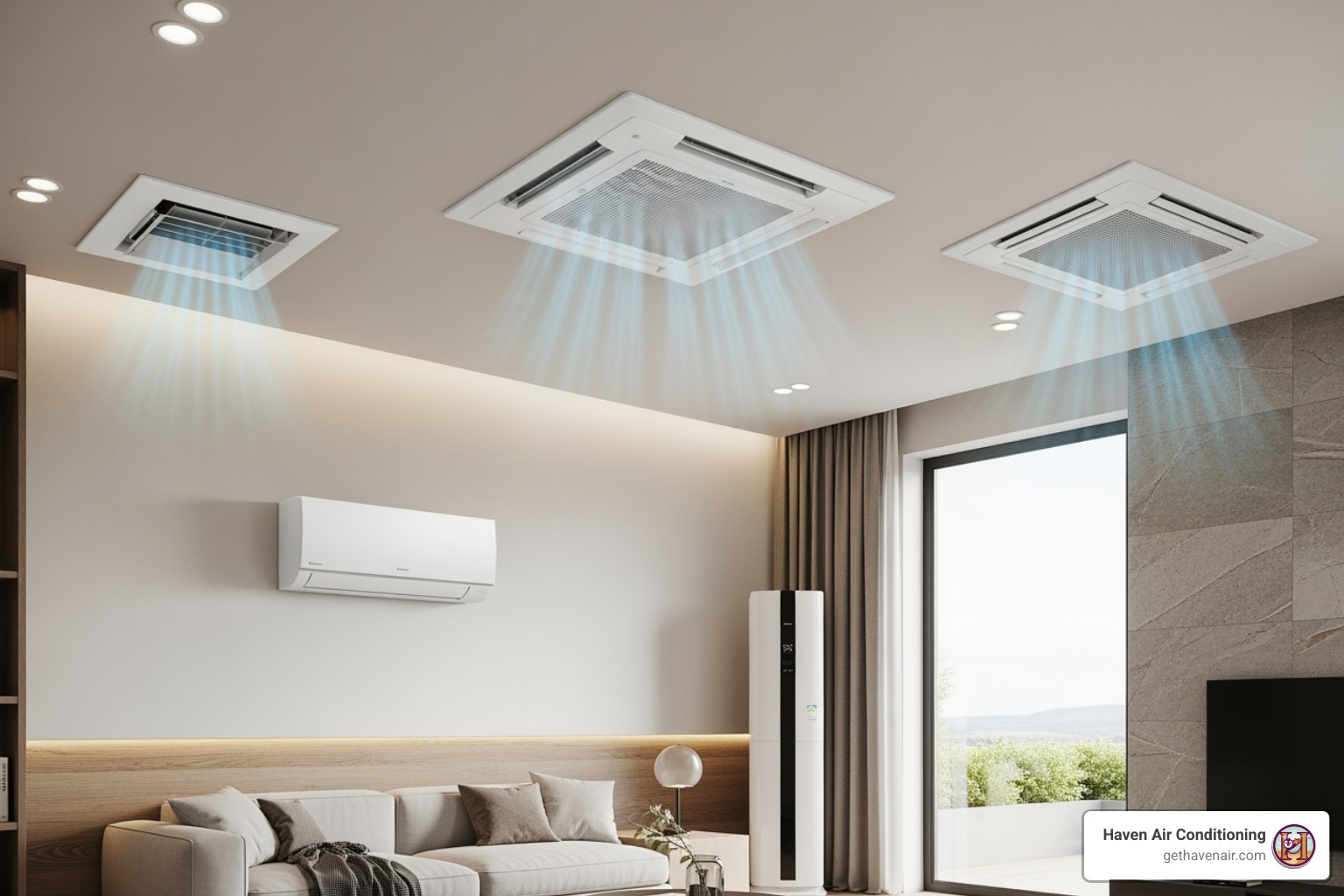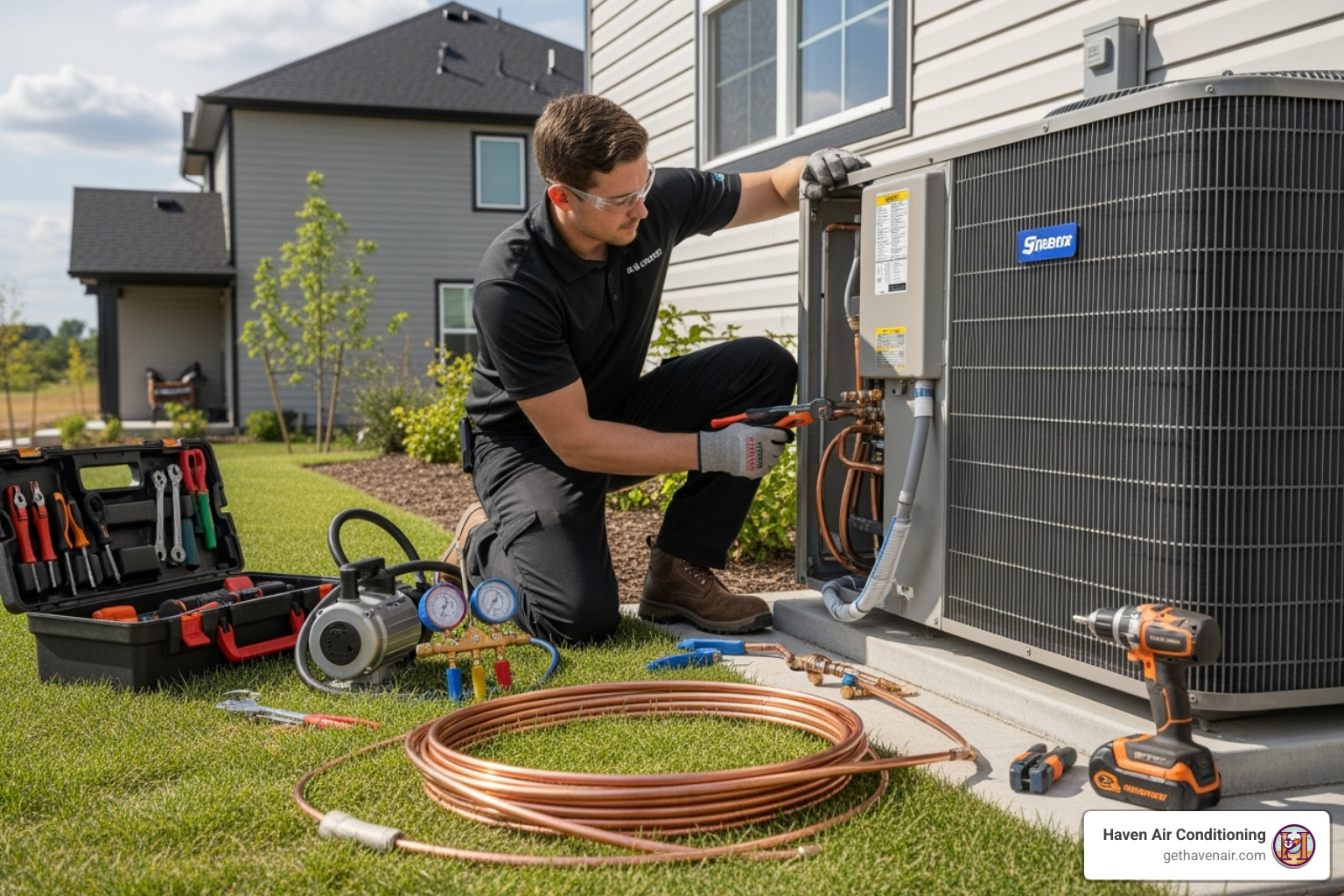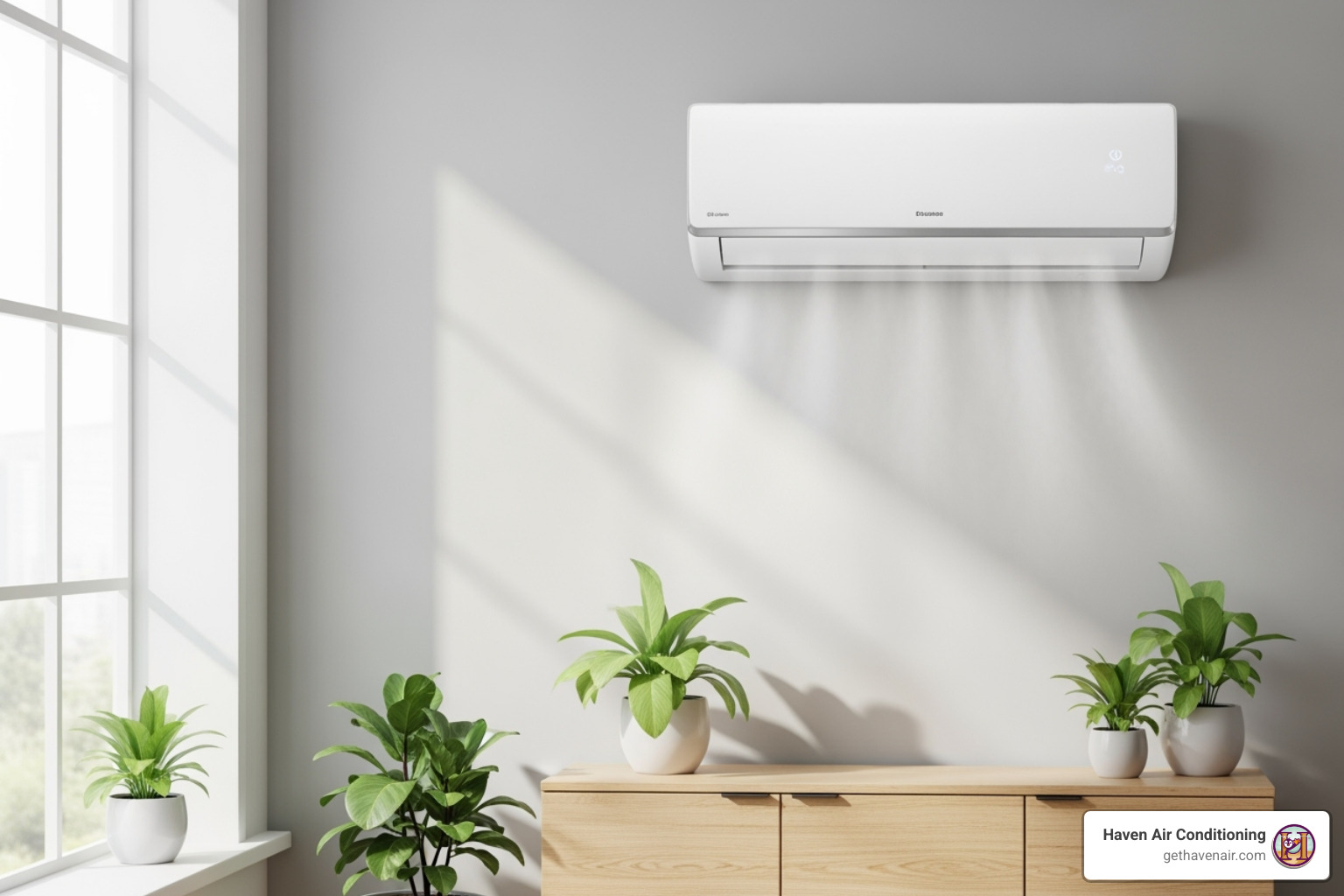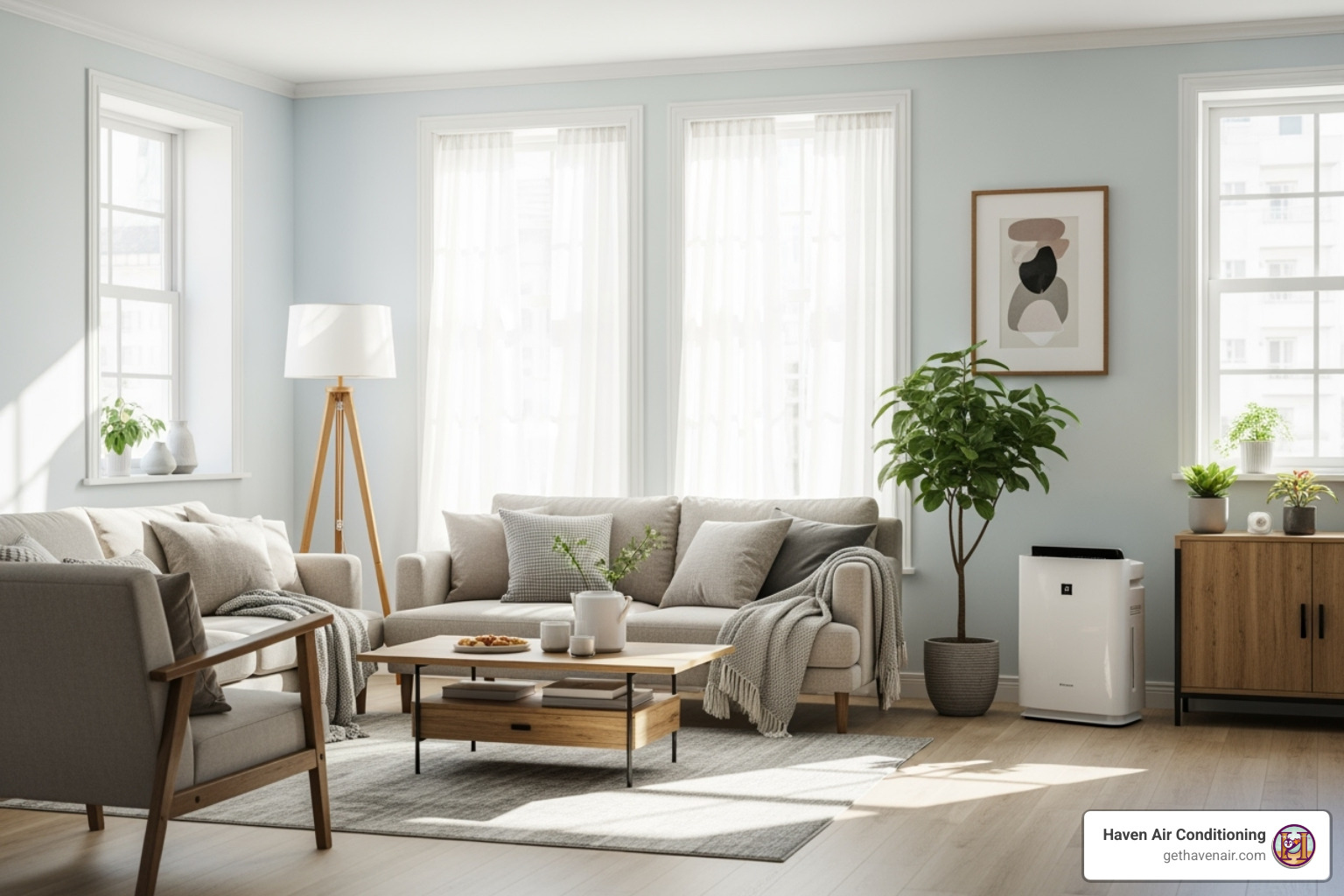Why Understanding Multi-Zone Mini Split Installation Factors Matters
The investment for a multi-zone mini split system can vary significantly, as each project is unique. The final scope of your project depends on several key factors:
What Influences Your Quote:
- Number of indoor units (zones) needed
- BTU capacity (size) of the system
- Style of indoor units (wall-mounted, ceiling cassette, etc.)
- Brand and energy efficiency (SEER rating)
- Installation complexity and labor
- Additional materials and electrical work
If you’re considering a ductless mini-split for your Orange County home, you may notice that quotes differ between contractors. Unlike single-zone systems, multi-zone configurations connect several indoor air handlers to one outdoor compressor, giving you independent temperature control in different areas.
The investment covers more than just equipment. It includes the technology for zoned comfort, the skilled labor for proper installation, and the expertise needed to balance the system for optimal performance. This guide breaks down the components of an installation so you can understand the value you’re receiving.
Understanding the Investment for a Multi-Zone Mini Split
When you plan a multi-zone mini split installation, the total investment reflects both advanced equipment and the certified professionals who install and commission it. The outdoor condenser, multiple indoor air handlers, electrical work, refrigerant lines, and final testing all work together as one system.
Local factors matter too. In Orange County, demand, permitting standards, and the need for experienced installers influence project scope. We’re transparent about what’s included so you know you’re getting reliable performance, not just hardware.
The complexity of multi-zone systems requires careful planning and execution. Each component must be properly sized and matched to work harmoniously with the others. The outdoor unit needs sufficient capacity to handle all connected indoor units, while maintaining efficiency across varying load conditions. This balance is critical for achieving the comfort and energy savings that make mini splits attractive.
How the Number of Zones Impacts Your Quote
Each additional zone adds an indoor air handler, more line sets, more electrical connections, and more commissioning time. The relationship between zones and system complexity isn’t linear – each zone requires its own dedicated refrigerant lines, control wiring, and drainage solution.
- Two zones are ideal for independent control in two priority areas (for example, living room and primary bedroom). This configuration offers the simplest multi-zone setup while still providing the flexibility many homeowners seek.
- Three zones broaden coverage (home office by day, bedroom at night, plus main living space). This arrangement suits many modern lifestyles where different family members have varying comfort preferences.
- Four or five zones deliver whole-home comfort with room-by-room control. These systems require more sophisticated outdoor units and careful load balancing to ensure each zone receives adequate capacity.
More isn’t always better. We start with how you use your home to right-size the number of zones so you get targeted comfort without over-complicating the system. Over-zoning can lead to short cycling and reduced efficiency, while under-zoning may leave some areas uncomfortable.
The Role of System Size (BTU Capacity)
BTU capacity simply indicates how much heating or cooling the system can deliver. Undersized systems struggle on hot days; oversized systems short-cycle and waste energy. Square footage is a starting point, but correct sizing also considers ceiling height, insulation, window area and orientation, occupancy, and exposure.
The relationship between BTU capacity and comfort extends beyond simple temperature control. Properly sized systems maintain consistent humidity levels, operate more quietly, and experience less wear from frequent cycling. In Orange County’s climate, where we experience both warm summers and mild winters, heat pump systems need careful sizing to perform efficiently in both modes.
That’s why we perform a Manual J load calculation for every installation. It’s the data-backed way to match your home’s needs with the right capacity so you get consistent comfort and efficiency. This calculation considers factors specific to your home, including construction materials, orientation, shading, and even the heat generated by appliances and occupants.
Key Factors That Influence Your Installation Quote
Beyond zones and capacity, your homes layout and construction influence the scope of work. Longer line runs for second floors, tight attic or crawlspace access, and wall materials (drywall vs. stucco or brick) can affect installation time and planning.
Equipment and Indoor Unit Style
The outdoor condenser must support the total number of indoor units. Indoor air handler styles also influence aesthetics and installation complexity:
- Wall-mounted units: popular, efficient, and typically the most straightforward to install.
- Ceiling cassette units: clean, recessed look for larger rooms; installation is more involved.
- Concealed ducted units: hidden with short duct runs for an invisibleappearance; requires additional planning.
- Floor-mounted units: ideal when upper wall space is limited.
Brand and Energy Efficiency’s Effect on the Installation
Premium brands often add advanced features, quieter operation, and longer warranties. Standard brands can be a great fit for many homes. Efficiency ratings matter for ongoing savings:
- SEER (cooling efficiency) and HSPF (heating efficiency) indicate how efficiently the system operates.
- ENERGY STAR certified systems meet strict criteria and may qualify for rebates and tax credits.
Labor and Additional Installation Materials
Skilled installation is essential for performance, longevity, and protecting your warranty. Key material and labor considerations include:
- Refrigerant line sets: length depends on layout; longer runs add materials and installation steps.
- Condensate management: gravity drain preferred; a condensate pump is added when needed.
- Outdoor mounting: a level concrete pad or wall bracket ensures stability and proper clearances.
- Electrical: dedicated circuits and code-compliant connections; panel upgrades may be needed in some homes.
Haven Air Conditioning handles these details end-to-end so your system runs quietly, efficiently, and reliably.
Professional vs. DIY and Other Project Considerations
Beyond equipment and labor, a few additional items can affect your project.
Permit requirements and fees
Most municipalities require permits for HVAC installations to ensure safety and code compliance. In Orange County, fees vary by city. We handle the paperwork and inspections for you.
Electrical panel upgrades
Multi-zone systems need dedicated electrical capacity. If your panel is full or outdated, an upgrade may be required. We coordinate with licensed electricians when needed.
Removal of old HVAC systems
If youre replacing existing equipment, proper removal and disposal are important. Ask whether this is included in your project scope.
The Value of Professional Installation vs. DIY
DIY mini split kits can seem appealing, but multi-zone systems require refrigerant handling, electrical work, pressure testing, evacuation, and system balancing. Most manufacturers also require certified professional installation to keep warranties intact. Improper refrigerant connections can cause leaks, poor efficiency, and premature failures.
Professional installation delivers correct sizing, clean line-set routing, code-compliant electrical, and validated performance. If youre outside our area, organizations like NATEX list certified technicians.
Comparing Multi-Zone Mini Splits to Traditional HVAC
- Homes with existing, well-sealed ductwork may lean toward traditional systems.
- Homes without ductwork often benefit from ductless multi-zone solutions that avoid invasive construction.
- Duct losses can reach 2030% in some homes; ductless systems avoid this and add room-by-room control.
- Installations are typically faster and less disruptive without duct modifications.
Long-Term Value and How to Save on Your Installation
Multi-zone mini splits deliver comfort where you need it and avoid duct losses common in traditional systems. With zoned control, many homeowners reduce energy use by conditioning only occupied rooms, often translating to meaningful bill savings over the life of the system. In Orange Countys market, modern, efficient systems can also improve home appeal.
Rebates, Tax Credits, and Other Savings Opportunities
- Federal incentives are often available for high-efficiency heat pump systems.
- California and local programs may offer additional incentives; check the Database of State Incentives for Renewables & Efficiency (DSIRE).
- Utilities such as Southern California Edison frequently provide rebates for qualifying equipment.
- Off-season scheduling (spring/fall) can offer more flexibility and potential savings; ask during your quote process.
Frequently Asked Questions about Multi-Zone Mini Split Installations
How many mini splits do I need for a 2,000 sq ft house?
Many 2,000 sq. ft. homes use 3 to 4 indoor units with a total capacity of roughly 36,000 to 48,000 BTUs, depending on layout, insulation, windows, and climate. The best way to confirm is with a Manual J load calculation.
Is a multi-zone mini split a better value than central air?
If you already have good ductwork, traditional central systems can be a solid option. If you lack ductwork, ductless multi-zone systems often make more sense and avoid invasive construction. They also reduce energy waste through ducts and let you condition only the rooms you use.
What factors contribute to the investment in a mini split installation?
- Multiple indoor units plus a compatible outdoor condenser
- Skilled labor for refrigerant, electrical, drainage, and commissioning
- Materials such as copper line sets, wiring, brackets, and condensate solutions
- The extra planning and balancing required for multi-zone performance
Get a Clear and Accurate Quote for Your Home
Every home is different. The right plan depends on your layout, zones, insulation, windows, and how you use each space. A professional assessment and Manual J load calculation ensure your system is sized and configured for comfort and efficiency.
If youre in Greater Orange County, Haven Air Conditioning makes the process seamlessrom permits and electrical coordination to clean installation and final testing. Ready to explore your options? Learn more about our professional mini-split AC installation services and lets start a conversation.


